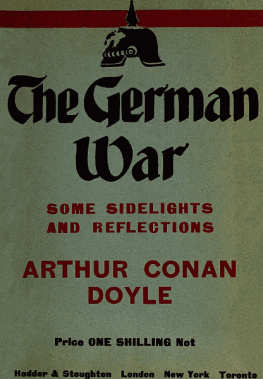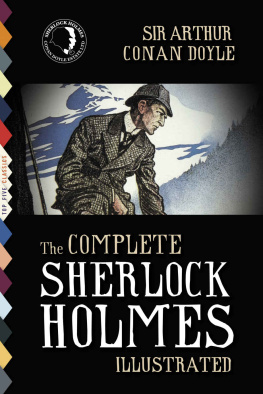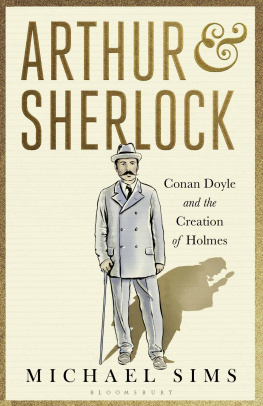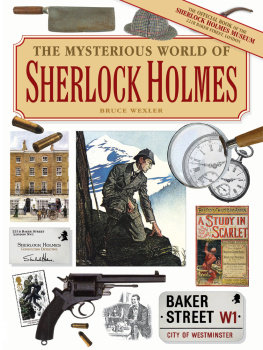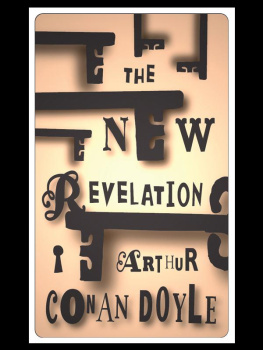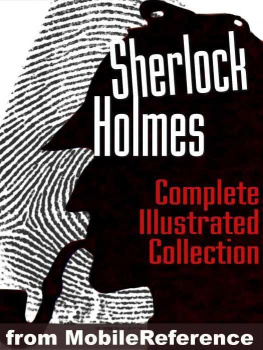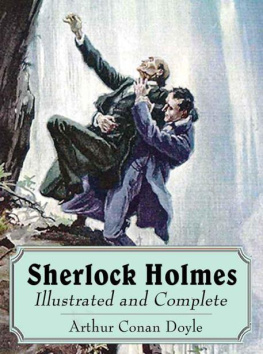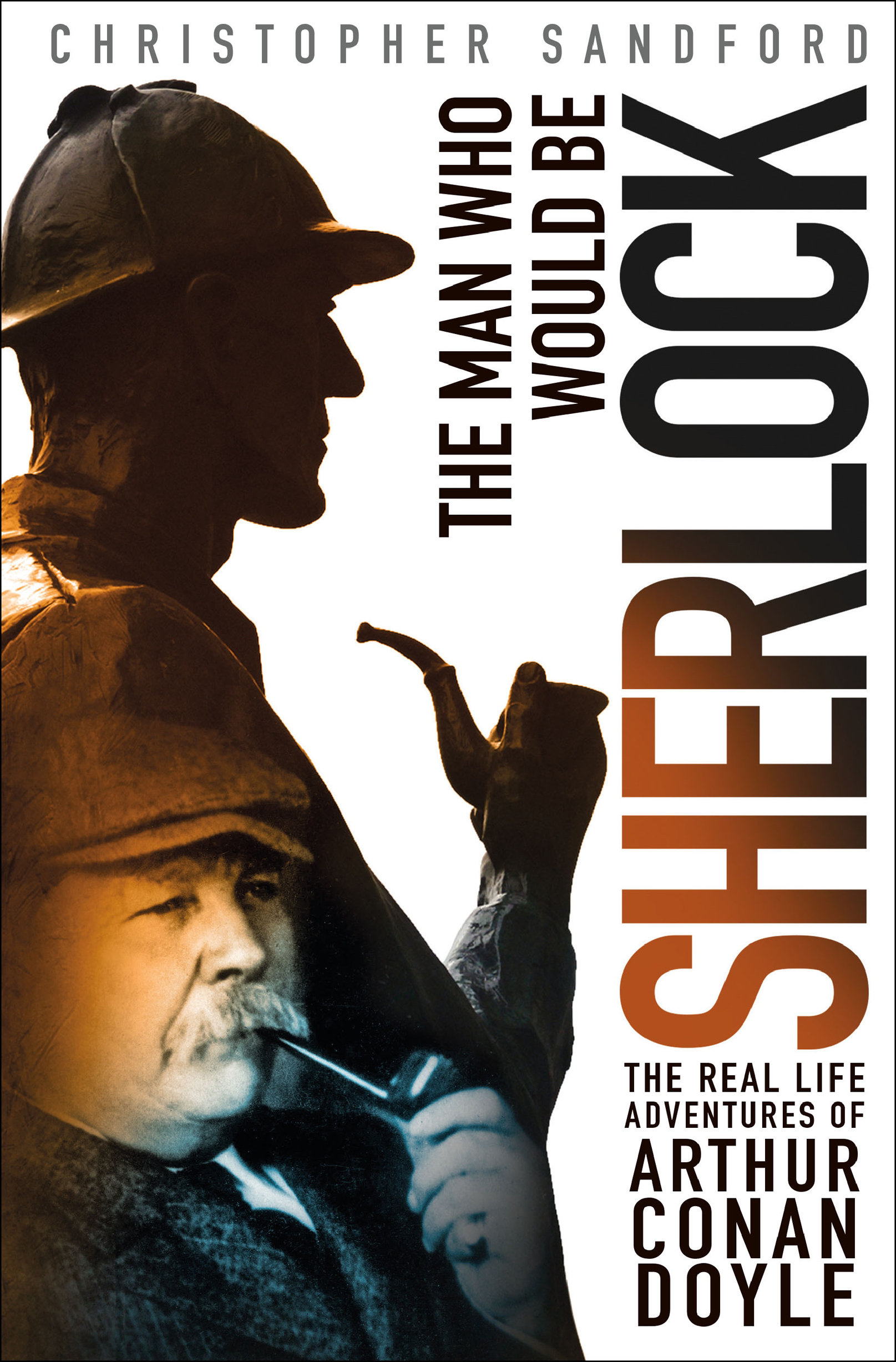Contents
Guide
Pagebreaks of the print version

The author and publisher have provided this e-book to you for your personal use only. You may not make this e-book publicly available in any way. Copyright infringement is against the law. If you believe the copy of this e-book you are reading infringes on the authors copyright, please notify the publisher at: us.macmillanusa.com/piracy.
To Maynard Atik
Some judge of authors names, not works, and then
Nor praise nor blame the writings, but the men.
Alexander Pope
Essay on Criticism
Art in the blood is liable to take the strangest forms.
Arthur Conan Doyle
The Greek Interpreter
You know my methods, Watson.
Arthur Conan Doyle
The Crooked Man
This is not a biography of Arthur Conan Doyle, nor of Sherlock Holmes. Anyone interested in reading more about either one of them will find some suggestions in the bibliography at the back of the book. Nor would I ever be rash enough to enter the briar-patch of a debate on, say, the prevalence of certain sorts of human tattoo in one part of Victorian Britain as opposed to another one, or on the precise location of Dr Watsons war wounds, or the order of his marriages, or on any number of other matters best left to that devoted cult of followers going under the banner of Sherlockians. Nor, in particular, could I comment with any presumption of authority on Doyles famously mixed feelings about Holmes, who clearly belonged to that different and humbler plane of literature that the author himself sometimes pursued and sometimes mocked, although my old English master and friend Alan Kennington, who at one time actually knew Doyle, always liked to quote Macbeth on these occasions, We but teach bloody instructions, which, being taught, return to plague the inventor.
Instead, Ive tried to show the ways in which Doyle himself consistently applied both the intellect and innate sense of justice (if not always the mercurial powers of observation) of his immortal creation. In at least two cases, that of the young Anglo-Indian solicitor George Edalji, imprisoned for a bizarre series of cattle mutilations near his home in the English Midlands, and of Oscar Slater, a German-born Jew who served eighteen years (and narrowly avoided execution) for having bludgeoned to death an elderly spinster in her Glasgow flat one night in December 1908, Doyle found himself at the centre of events every bit as outlandish as any he devised for Holmes. Although these would be the two great set-piece mysteries of Doyles detective career, he brought a similar blend of basic investigative ability and campaigning zeal to several other cases drawn to his attention, on both sides of the Atlantic, over the course of forty years. As well see, they continued even after the author himself modified his materialist beliefs and began to commune with the spirits of the dead following the heavy toll of his family losses in the First World War.
Although Doyle was always at pains to separate the doll and his maker, as he called Holmes and himself, both characters shared an intriguing mixture of the coldly scientific and rational on one hand, and the morally keen and chivalrous on the other. Its this seeming contradiction, along with a generous helping of those peculiarly foul crimes that seemed to predominate as Victorian Britain splashed around in a sea of immorality, that help to give Holmes his enduring appeal, and hopefully also apply here in the real-life adventures of his author.
For archive material, input or advice I should thank, professionally: AbeBooks; Alibris; the American Conservative ; Atlantic Monthly ; the late Saul Bellow; Birmingham City Council; the Bodleian Library, Oxford; Bonhams; Book Depository; Sophie Bradshaw; the British Library; the British Newspaper Library; Chronicles ; Stephen Cooper; the Cricket Society; the Daily Mail ; the Dogs of War Theatre; the FBI Freedom of Information Division; Dominic Farr; the General Register Office; Glasgow City Archives; Hansard ; the History Press; Michael Hurley; Jane Jamieson; Roger Johnson; Barbara Levy; the Library of Congress; Sue Lynch; Barbara McLean; the Magic Circle; Magicus; Marcia Markland; Michigan State Department of Health; the Mitchell Library, Glasgow; the National Archives; the National Records of Scotland; the 1976 Coalition; Mary Pilan; Premier Tutors; Renton Library; Rebecca Romney; St Martins Press; Seaside Library, Oregon; the Seattle Times ; the Sherlock Holmes Society; Staffordshire Record Office; Zoe Stansell; Liz Street; Andrew Stuart; Thomas Toughill; Cynthia Tyrrell; University of Montana; University of Puget Sound; Vital Records; the William Salt Library; Windleshams Manor; and Qona Wright. I would also like to thank Robin B. James for indexing.
And personally: Lisa Armstead; Reverend Maynard Atik; Pete Barnes; Jane Blunkell; the late Ryan Boone; Rocco Bowen; the late David Bowie; Robert and Hilary Bruce; Jon Burke; Don Carson; the late Pat Champion; Changelink; Hunter Chatriand; James Clever; Common Ground; Christina Coulter; Tim Cox; the Davenport; Monty Dennison; Micky Dolenz; the Dowdall family; John and Barbara Dungee; Reverend Joanne Enquist; Explorer West; Tom Fleming; Malcolm Galfe; the Gay Hussar; Gethsemane Lutheran Church; James Graham; the late Tom Graveney; Jeff and Rita Griffin; Charley Grimston; Grumbles; Steve and Jo Hackett; Hermino; the late Frank Hinsley; Alex Holmes; the Hotel Vancouver; Hyde Park Executive Apartments; Jo Jacobius; the Jamieson family; Lincoln Kamell; Terry Lambert; Belinda Lawson; Eugene Lemcio; the Lorimer family; Robert Dean Lurie; Les McBride; Heather and Mason McEachran; Charles McIntosh; the Macri family; Lee Mattson; Jim and Rana Meyersahm; Missoula Doubletree; the Morgans; John and Colleen Murray; Kaiyo Nedd; Greg Nowak; Phil Oppenheim; Gary OToole; Robin Parish; Owen Paterson; Peter Perchard; Chris Pickrell; the late John Prins; Robert Prins; the Prins family; Scott P. Richert; Ailsa Rushbrooke; St Matthews, Renton; Sandy Cove Inn; Susan Sandford; Peter Scaramanga; Fred and Cindy Smith; Reverend and Mrs Harry Smith; the late Thaddeus Stuart; Jack Surendranath; the late Ben Tyvand; Mary Tyvand; Robert Valade; Diana Villar; the late Peter Way; Karin Wieland; Soleil Wieland; West London Chemists; Debbie Wild; the Willis Fleming family; Aaron Wolf; the Woons; and Zoo Town Surfers.
My deepest thanks, as always, to Karen and Nicholas Sandford.
C.S.
2017
Who was Sherlock Holmes?
One of the paradoxes of Arthur Conan Doyles indestructible sleuth is that he seems both to embody the past and belong to the present. Although theres a generous amount of period detail to the Holmes stories, with their soupy miles of cobblestone streets, hes also a thoroughly modern, even futuristic human calculating machine, who takes full advantage of such emerging disciplines as psychiatry, forensics, toxicology, ballistics, analytical chemistry and anthropometrics the use of precise body measurements to profile criminals to complement his legendary powers of observation. Although Conan Doyle, like most authors, deplored the habit of identifying real-life models for his characters, he also took the opportunity to pay Dr Joseph Bell (18371911) the compliment of calling him the true Holmes.
The frock-coated Bell was 39 years old when Doyle, an impoverished medical student, first attended one of his lectures at Edinburgh University. Described as a thin, white-haired Scot with the look of a prematurely hatched bird, whose Adams apple danced up and down his narrow neck, the doctor spoke in a piping voice and is said to have walked with a jerky, scuttling gait suggestive of his considerable reserves of nervous energy. Bell was a keen observer of his patients mental and physical characteristics The Method, as he called it which he used as an aid to diagnosis. A lecture in the universitys gaslit amphitheatre might, for example, open with Bell informing his audience that the subject standing beside him in the well of the auditorium had obviously served, at some time, as a non-commissioned officer in a Highland regiment in the West Indies an inference based on the mans failure to remove his hat (a Scots military custom) and telltale signs of tropical illness, among other minutiae. Added to his impressive powers of deduction, Bell also liked to bring an element of drama to his lectures, for instance by once swallowing a phial of malodorous liquid in front of his students, the better to determine whether or not it was a deadly poison. (He survived the test.) For much of the last century, Bell has been the individual most popularly associated with the real Holmes.


